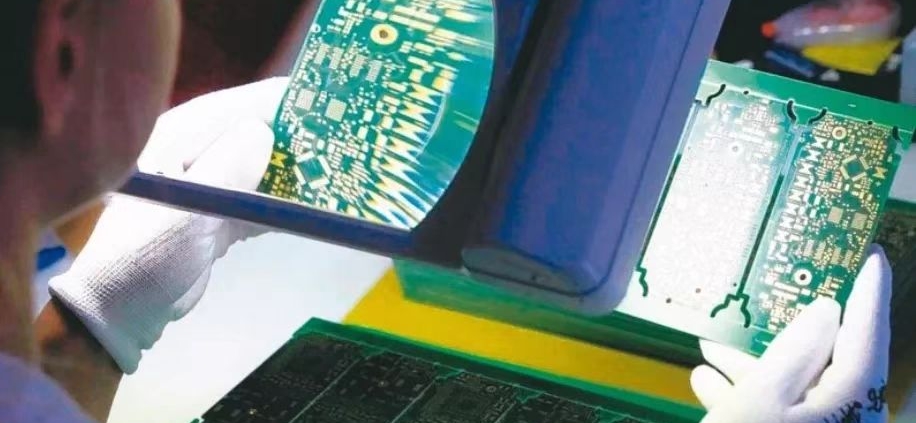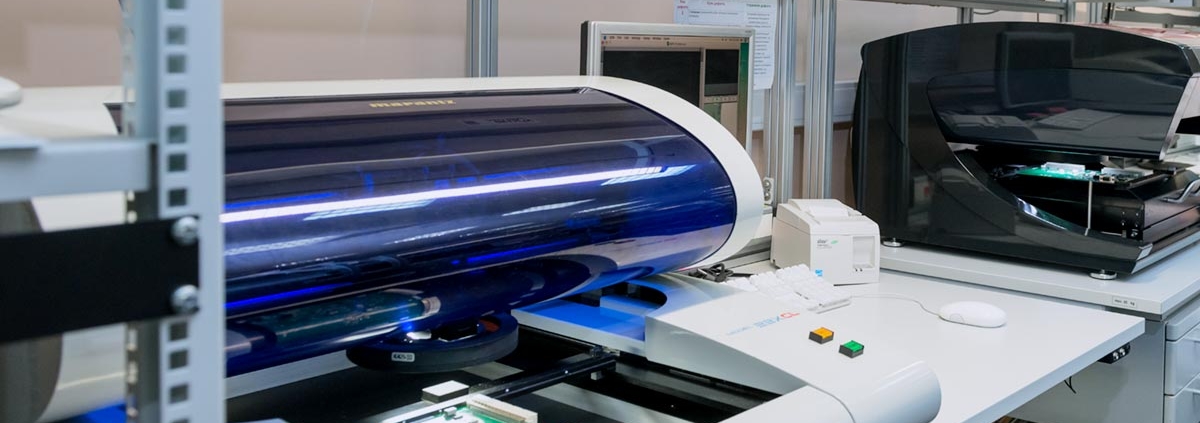Why do PCBs need to be panelized?
The purpose for panelization is mainly to meet production needs. Some PCB boards are too small to meet the requirements for making fixtures tester, so they need to be panelized together for production.
Panelizing can also improve the welding efficiency of SMT patches, such as completing the welding of multiple PCBs with just one SMT.
At the same time, it can also save costs, such as some irregularly shaped PCB boards. By splicing them together, waste can be reduced, thereby improving the utilization rate of the area.
Bad cases of no spacing panelization
Problem Description
Due to the screen printing of component packaging on the PCB board, which exceeded the board edge during design and was not inspected during assembly, there was interference with the components after seamless assembly, which affected SMT installation.
Problem Impact
Components beyond the edge of the board cannot be assembled without gaps, which affects the product development cycle. If forced assembly is carried out, such as half assembling and half not assembling adjacent components on the same side, it will also result in half of the product being scrapped.
Problem extension
Devices beyond the edge of the board, after being assembled without gaps, can still cause damage to the components and result in greater cost losses even if the plug-in is barely able to be inserted.
Applicable methods for PCB panelization
1. CNC+V-CUT Panel
The method of adding V-cut to the gong board for assembly is suitable for boards with components on the board edge. It cannot be assembled without gaps. Instead, it adopts the form of processing edge for assembly, with V-CUT processing on both ends and a gap in the middle for easy welding of components. Otherwise, the components on the board edge interfere with each other and cannot be assembled and welded.
2. Stamp Hole Bridge Panel
Stamp holes are a bridging method of plate assembly. Stamp hole bridging can solve problems that cannot be solved by V-CUT bridging, such as circular plates, irregular plates, etc. If V-CUT is not possible, stamp hole connection can only be used for plate assembly.
3. V-CUT + Stamp Holes Bridge Panel
The V-CUT bridge assembly is suitable for regular boards, as the V-CUT knife cannot bend, so the position of the V-CUT must be a straight line in order to be V-CUT. It is also important to note that the position of the components near the board edge cannot be assembled with the V-CUT, otherwise it will affect assembly and welding.
4. No break-out rails Panel
In order to save the utilization rate of the board, small board assembly often does not process the edges. However, it should be noted that there should be no components at the edge of the V-CUT position. If the components are close to the edge of the board, it is best to leave a gap between the processing edges for assembly, otherwise it will also affect the assembly and solderability of the components.







